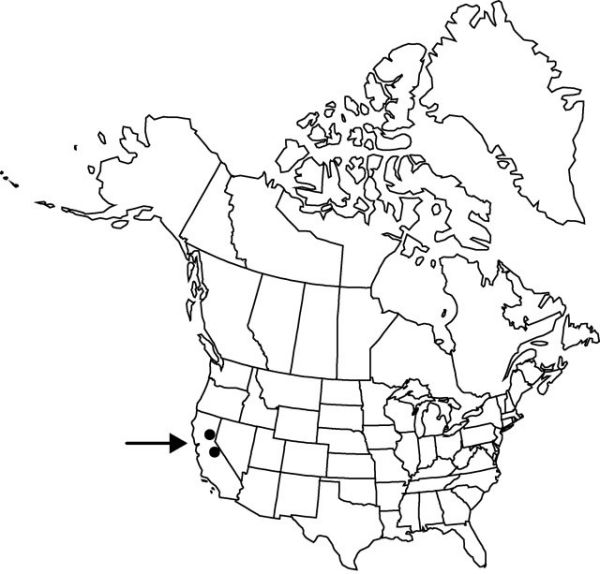Difference between revisions of "Triteleia montana"
Amer. Midl. Naturalist 25: 95. 1941.
FNA>Volume Importer |
imported>Volume Importer |
||
| (6 intermediate revisions by 2 users not shown) | |||
| Line 8: | Line 8: | ||
}} | }} | ||
|common_names=Mountain triteleia | |common_names=Mountain triteleia | ||
| − | |basionyms={{Treatment/ID/ | + | |special_status={{Treatment/ID/Special_status |
| + | |code=E | ||
| + | |label=Endemic | ||
| + | }} | ||
| + | |basionyms={{Treatment/ID/Basionym | ||
|name=Brodiaea gracilis | |name=Brodiaea gracilis | ||
|authority=S. Watson | |authority=S. Watson | ||
| − | }}{{Treatment/ID/ | + | |rank=species |
| + | |publication_title=Proc. Amer. Acad. Arts | ||
| + | |publication_place=14: 238. 1879 | ||
| + | }} {{Treatment/ID/Basionym | ||
|name=Triteleia gracilis | |name=Triteleia gracilis | ||
|authority=(S. Watson) Greene | |authority=(S. Watson) Greene | ||
| + | |rank=species | ||
| + | |publication_title= | ||
| + | |publication_place=1886 | ||
}} | }} | ||
|synonyms={{Treatment/ID/Synonym | |synonyms={{Treatment/ID/Synonym | ||
|name=Hookera gracilis | |name=Hookera gracilis | ||
|authority=(S. Watson) Kuntze | |authority=(S. Watson) Kuntze | ||
| + | |rank=species | ||
}} | }} | ||
|hierarchy=Liliaceae;Triteleia;Triteleia montana | |hierarchy=Liliaceae;Triteleia;Triteleia montana | ||
| Line 33: | Line 44: | ||
|elevation=1200–3000 m | |elevation=1200–3000 m | ||
|distribution=Calif. | |distribution=Calif. | ||
| − | |discussion=<p>Locally rather plentiful, Triteleia montana appears to have a disjunct distribution in the Sierra Nevada range north and south from Yosemite, though future collections may bridge the gap between the distributions currently indicated. Molecular data suggest that it is related to T. lemmoniae of Arizona (J. C. Pires 2000).</p> | + | |discussion=<p>Locally rather plentiful, <i>Triteleia montana</i> appears to have a disjunct distribution in the Sierra <i>Nevada</i> range north and south from Yosemite, though future collections may bridge the gap between the distributions currently indicated. Molecular data suggest that it is related to <i>T. lemmoniae</i> of Arizona (J. C. Pires 2000).</p> |
|tables= | |tables= | ||
|references= | |references= | ||
| Line 42: | Line 53: | ||
-->{{#Taxon: | -->{{#Taxon: | ||
name=Triteleia montana | name=Triteleia montana | ||
| − | |||
|authority=Hoover | |authority=Hoover | ||
|rank=species | |rank=species | ||
| Line 56: | Line 66: | ||
|publication title=Amer. Midl. Naturalist | |publication title=Amer. Midl. Naturalist | ||
|publication year=1941 | |publication year=1941 | ||
| − | |special status= | + | |special status=Endemic |
| − | |source xml=https:// | + | |source xml=https://bitbucket.org/aafc-mbb/fna-data-curation/src/2e0870ddd59836b60bcf96646a41e87ea5a5943a/coarse_grained_fna_xml/V26/V26_706.xml |
|genus=Triteleia | |genus=Triteleia | ||
|species=Triteleia montana | |species=Triteleia montana | ||
Latest revision as of 21:16, 5 November 2020
Leaves 10–30 cm × 2–5 mm. Scape 5–20(–25) cm, ± scabrous. Flowers: perianth yellow, aging purple, 12–17 mm, tube slender, narrowly funnelform, attenuate at base, 4–7 mm, lobes somewhat spreading, with brown midvein, 8–10 mm, ca. twice as long as tube; stamens attached at 1 level, equal; filaments linear, 5–6 mm, more than 1/2 as long as perianth lobes, apical appendages absent; anthers cream or blue, 1–1.5 mm; ovary equal to stipe; pedicel 0.5–3 cm. 2n = 16.
Phenology: Flowering summer (Jun–Jul).
Habitat: Open montane coniferous forest, gravelly plains, granite ridges
Elevation: 1200–3000 m
Discussion
Locally rather plentiful, Triteleia montana appears to have a disjunct distribution in the Sierra Nevada range north and south from Yosemite, though future collections may bridge the gap between the distributions currently indicated. Molecular data suggest that it is related to T. lemmoniae of Arizona (J. C. Pires 2000).
Selected References
None.
